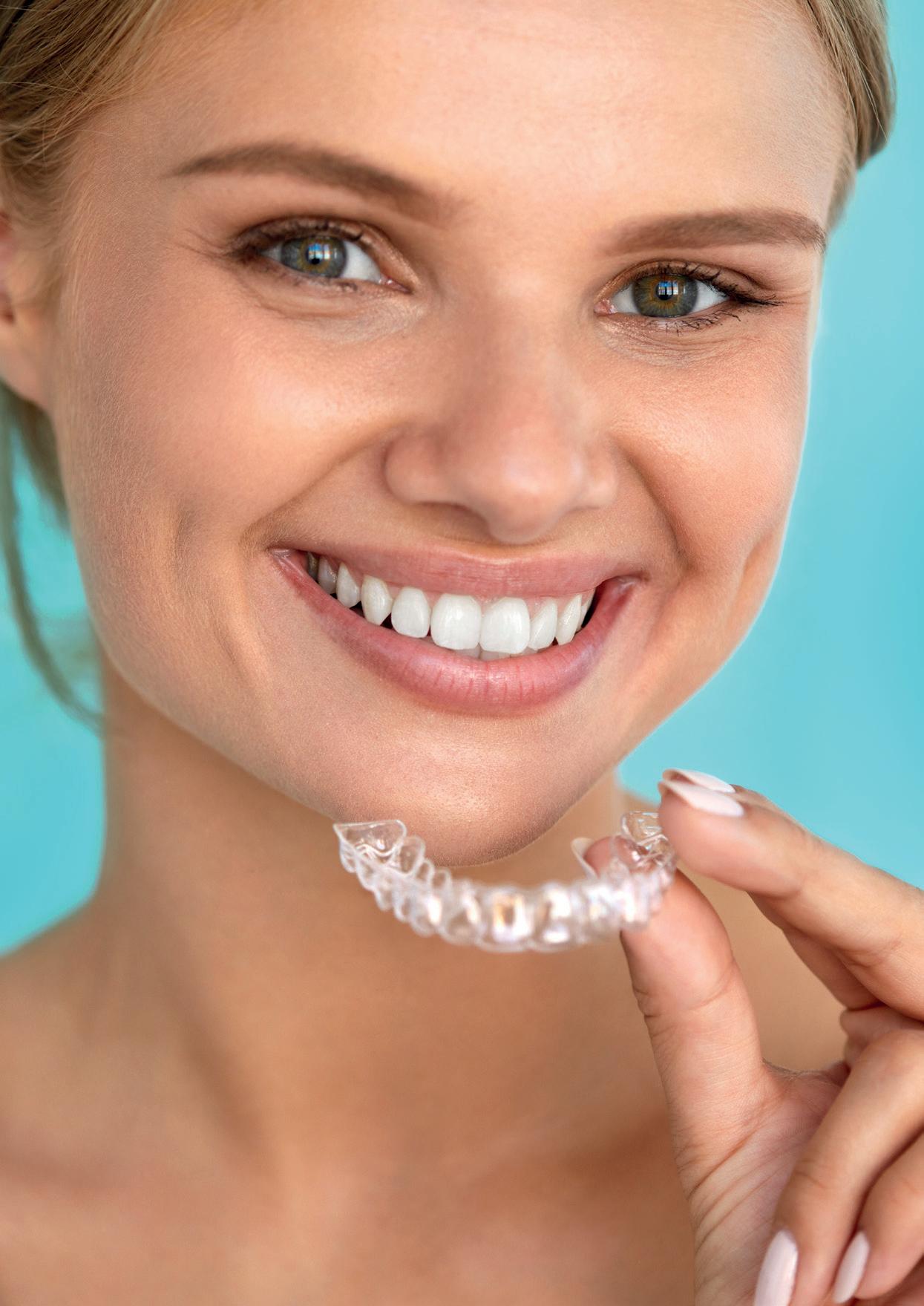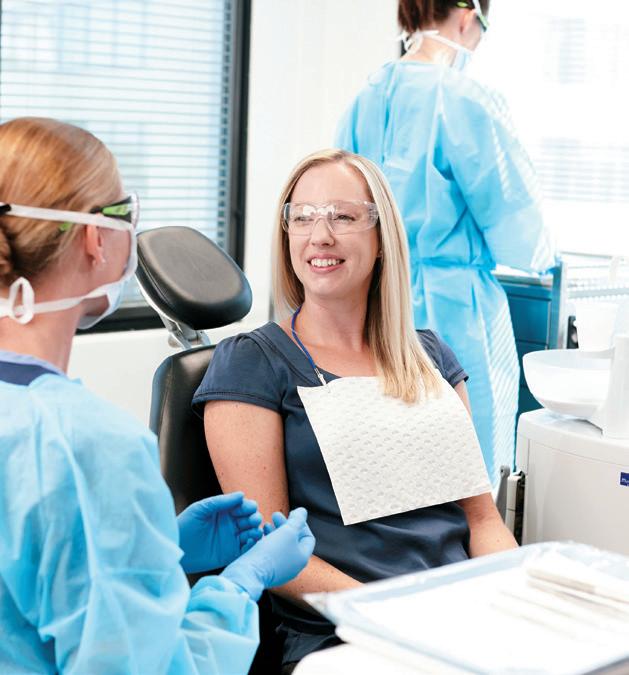
3 minute read
AUSTRALIAN DENTAL ASSOCIATION - THE SAFEST WAY TO WHITEN YOUR TEETH
THE SAFEST WAY TO WHITEN YOUR TEETH
FOR DENTAL HEALTH WEEK (1-7 AUGUST) THE AUSTRALIAN DENTAL ASSOCIATION PROVIDES CONSUMERS WITH THE SAFEST PATH TO WHITER TEETH


Emeritus Professor Laurie Walsh There can be little doubt that white teeth shout youth, beauty and health. Indeed one in five Australian adults must agree because that’s how many have whitened their teeth in the last 12 months. But other recent statistics from the Australian Dental Association’s (ADA) 2021 Consumer Survey of 25,000 Aussies show that some people are not taking the safest route to whiter teeth:
SURVEY RESULTS • Only 1 in 3 adults whitening their teeth are doing so under the supervision of a dental professional, 19% opting for a take home kit supplied by a dentist and 14% opting for in-clinic whitening, • 39% bought a kit online, 19% got over-the-counter products like strips or gel from a pharmacy or supermarket, and 9% used whitening services provided by someone other than a dental professional.
While teeth whitening undoubtedly turns back the hands of time, the means to get there are often pursued in the wrong way by a percentage of the population. That means using products that are above the allowed legal limit of 6% hydrogen peroxide which can result in damage to the gums – or excessive sensitivity of the teeth from failing to see a dentist to check your teeth first. “If you don’t see a dentist beforehand, you won’t know if you have untreated tooth decay, exposed roots, broken or compromised fillings, cracks or other mouth issues that may well cause pain or discomfort when bleach meets them,” explained Emeritus Professor Laurie Walsh, the ADA’s expert on teeth whitening. “Then there is the issue of trays - an ill-fitting tray which has not been made from a customised mould designed to fit the exact shape of your teeth, can lead to bleach leaking from the tray, burning gums and soft tissue - and even being swallowed - which may cause ulceration to the throat.” »
While nearly one in five is whitening using a kit from a supermarket or pharmacy, these carry a multitude of risks: the concentration of whitening agent (hydrogen peroxide) may be unknown. It may be too weak to be effective, making it a waste of time and money, or too strong causing much greater risk of sensitivity, gum ulceration or burning of the gums. Also, some over the counter products use flavours such as citric acid. Recent research has shown that some of these products can erode tooth enamel. Not all mouths are suitable for the whitening process. Prof. Walsh added: “A trip to the dentist rather than opting for an over the counter product or treatment by a non-dental professional will also leave consumers more informed. Your dentist will explain the side effects with tooth whitening that everyone considering this treatment needs to be aware of.”


THE MAIN SIDE EFFECTS INCLUDE:
1. TOOTH SENSITIVITY
Teeth are porous and the peroxide bleaching agent/gel can penetrate the tooth, making them more sensitive to cold stimuli. Most sensitivity is transient however, and settles down a short time after the whitening is completed. 2. GUM IRRITATION
The gums can be irritated or slightly ulcerated from the peroxide in the bleaching agent or even be irritated by the trays used to hold the gel in place. These irritations usually heal quite quickly. 3. MULTICOLOURED TEETH
This is a huge problem if people attempt DIY whitening procedures without consideration of whether they have any fillings, veneers, or crowns on their teeth. These dental filling materials do not change colour and the result can be multi-coloured teeth. The only way to rectify this is to replace the fillings, veneers and crowns. This ends up being more time consuming, invasive, and more expensive than expected. Rather than risk irreversible damage to teeth, it’s safer to consult with the person who knows your teeth the best – your dentist. They can discuss the options, advise whether you or your family member is a suitable candidate for teeth whitening, and supervise the process so that you get the best possible results. If you don’t have a dentist, head to the Australian Dental Association’s Find a Dentist search engine for one in your area, www.ada.org.au/Find-a-Dentist.
FIND A DENTIST
CLICK HERE






